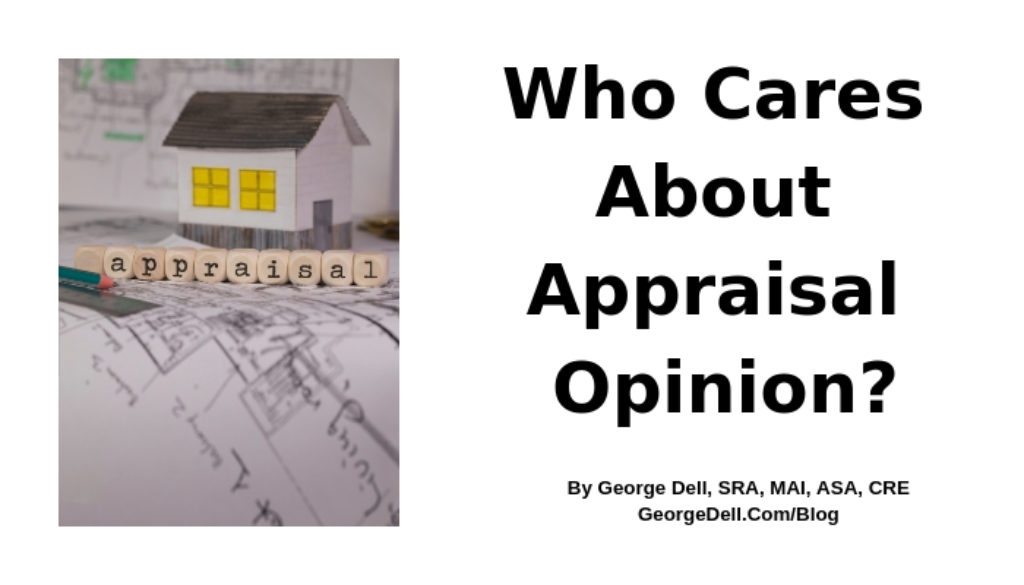An opinion of value is just that. Everyone has one.
Asset value is wanted for one of three reasons: to measure risk, forecast profit, or to achieve fairness. Mostly the clients are collateral lenders, investors, and regulators/litigators.
An appraisal is an opinion of value by an appraiser acting in appraisal practice. There are other opinions out there. Examples are a BPO (broker price opinion), CMA (competitive market analysis) and an evaluation, which also can be performed by someone without an appraiser license or qualifications.
There are also different types of appraisals. The more traditional appraisal meant the analyst inspected the subject property as well as the neighborhood and physically, visually evaluated the choice of comparables and their features. Some are ‘desktops’ where the appraiser never leaves the office. Others are a ‘drive-by’, where the appraiser drives by and observes the exterior of the property, and may or may not evaluate the neighborhood and view the comparables.
And now we have ‘hybrids,’ where the physical inspection is performed by a non-appraiser. (So far, I have heard no mention of whether the interior inspector forms any evaluation of the neighborhood, or looks at the comparables).
What’s the one thing in common?
In each case, what’s delivered to the lender-client is a hypothetical expected market selling price. It’s called market value. (We know value does not necessarily equal price. We also know that in the last price meltdown, most of the conditions of the definition of market value were ignored). Each of the above methods delivers a single-number “value.” In each case, the lender-client uses the number to make a decision to loan or not to loan.
What’s the one thing in difference?
Why do we have a number of products, each delivering the same thing—a single number? The difference is risk.
Risk of loss is factored into the business model. All these products sell information on risk. But sometimes the risk of loss is very low. (Like a low loan-to-value ratio, or where there is other collateral or is just for ‘an abundance of caution’).
If the risk is low, there’s little need for an ‘accurate’ value! Close enough is close enough. If the risk is high, money spent on a ‘full’ appraisal is the right decision.
Each of the above types of opinions and price predictions deliver a ‘value.’ So what matters?
What matters is how accurate is the result. How reliable is the result? How well will it help control the risk? That’s all that really matters to the lender client.
If a client otherwise has a higher risk, that client needs a more reliable ‘value.’ A more reliable price prediction costs more. What appraisers have to sell is help toward evaluation of risk. That’s it!
It appears that today the market for valuations is responding to the demand for valuations. In order to survive and give the world what it needs, appraisers may need to have a broader mind-set.
Appraisers may need to start selling more or better or different risk-control products, not just a point value. Not just an opinion of price two weeks ago.

April 3, 2019 @ 12:56 pm
So George you talk about more reliable often as well as a measure of deviation, where the beef. Whats the answer, the formula for what you’re speaking of. An agreed upon protocol that we can adhere to and who measures this and how???
September 5, 2020 @ 7:53 pm
Hello Anthony,
Excellent note. It is not easy, else it would have been done a long time ago.
It requires people competent in the computation (analysis) tools, as well as experience appraising.
We do teach the basics in the SGDS classes, as well as in the TAAR (The Asset Analyst Report) — using R open source software.
George Dell
Thank you!